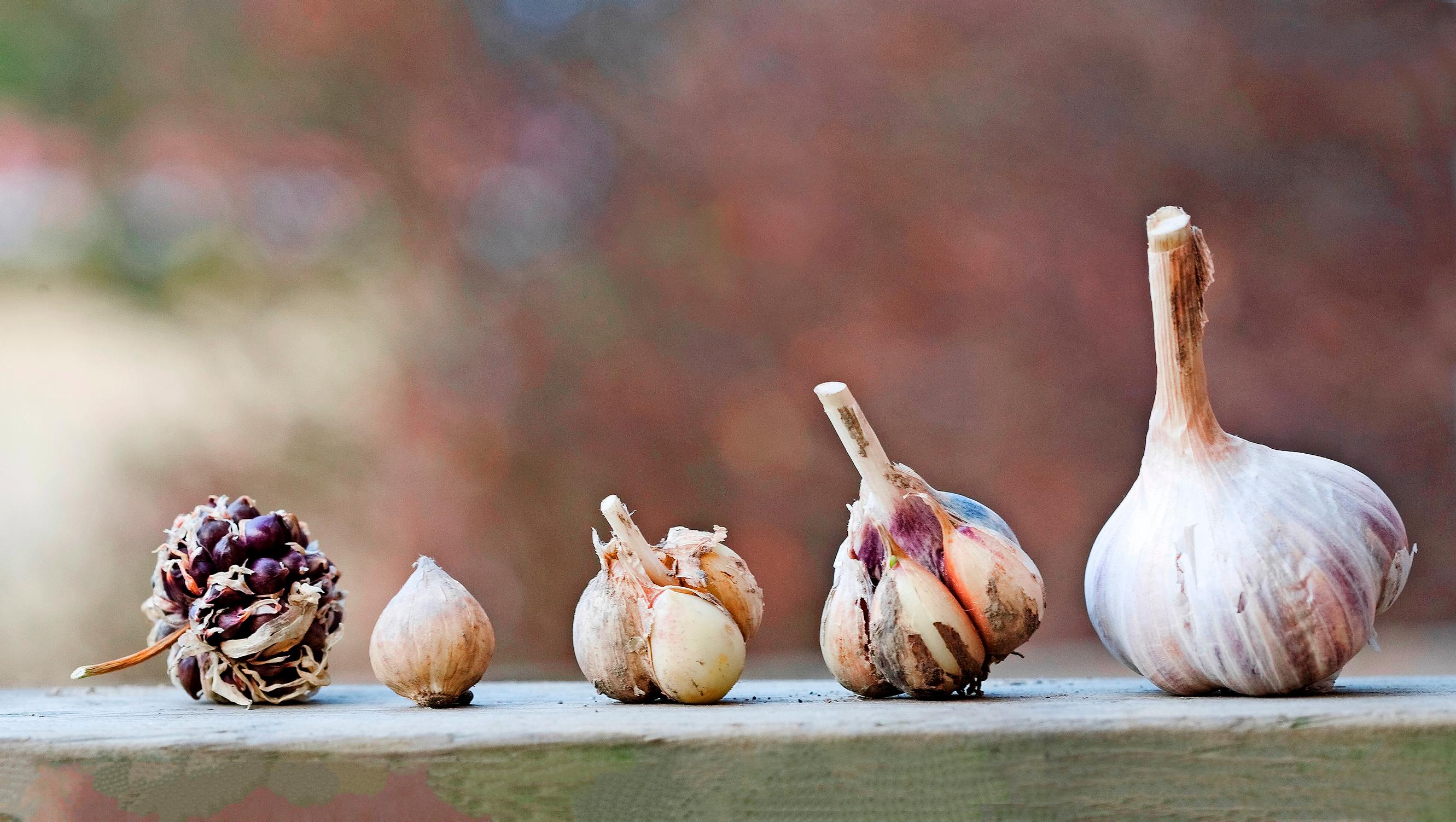
Hardneck garlic yields a large-cloved and aromatic harvest—here’s how to plant it successfully in autumn
Planting hardneck garlic cloves in autumn leads to early growth in spring, with the plants maturing over the summer into robust bulbs rich in flavor and size. Successful cultivation requires a warm site with generous watering. The harvest, which matures at the end of summer, benefits from fertilization from autumn through summer.
Planting and growing hardneck garlic
Soil
A water-retentive, deeply tilled, and heavily fertilized soil is ideal. Garlic yields its best harvest in loose, humus-rich soil. Improve clayey and sandy soils with compost or well-rotted manure. Garlic requires ample nutrients; sprinkle hardwood ash or lime into the planting furrow. The optimal soil pH is 6.5–7.
Location
Select a growing site with good drainage. Garlic tolerates cold well but dislikes excessive moisture.
Planting
Plant cloves in September–October, allowing them to develop roots before the ground freezes. In northern Finland, cloves should be planted at the end of September; in southern Finland, in late October. Separate the cloves from the mother bulb only when planting. Choose large cloves with intact skins and a fresh onion scent. If possible, roll them in hardwood ash before planting.
Plant the cloves at a depth of 5–15 cm—the looser and sandier the soil, the deeper you should plant. Space the plants 10–15 cm apart; planting too densely may reduce the size of the bulbs.


Fertilization
Fertilize three times with chicken manure pellets or well-rotted compost: in September, mix it into the furrow; in spring, after the ground thaws, apply on the soil surface; and again in mid-June, on the soil surface. Water helps nutrients reach the plants quickly. Grass clippings make excellent mulch.
Watering
Water the plants in spring and early summer until the foliage reaches its full size and flower stalks begin to appear. During dry periods, water once a week with 2–3 ten-liter watering cans per square meter. Drought can halt the growth of garlic.
Weeding
Keep the rows free of weeds, as garlic is not a strong competitor. Hoe carefully to avoid damaging the shallow roots of the garlic.
Remove the flower stalks to encourage larger bulbs. If you wish to grow new bulbs from bulbils, leave a few flower stalks intact.

Harvesting
Harvest in July–August when the lowest two or three leaves of the plant have yellowed. This ensures that the bulb remains intact. Use a garden fork to lift the bulbs, and make sure not to break the stems. Rinse off the soil with water. Dry them at room temperature for about a month until the stems have dried out completely. For bulbs intended for consumption, cut the stems to a couple of centimeters once they’ve dried thin and crispy.
Storage
The ideal storage is a dry and airy space at about +2 degrees Celsius. However, the harvest can also keep well for months at room temperature in a shallow basket or in a mesh or paper bag.
Hang the bulbs to dry in a sheltered, rain-free place, or dry them in a space under 40 degrees Celsius. Seed bulbs don’t need to be completely dry, unlike bulbs intended for eating.
Growing hardneck garlic—succeed with these tips!
- Remember crop rotation, as many onion diseases persist in the soil. Even if the crop is healthy, it’s best to plant garlic in the same site only after 5–7 years.
- Consider growing broad beans as a preceding crop before garlic; they fix nitrogen and loosen the soil deeply. Peas are also good preceding crops.
- Monitor the crop and select bulbs for propagation during the growing season. The best seed bulbs are healthy, with lush foliage, regular shape, and large size.
- Renew a strain that has lost vigor by growing from bulbils. Leave some flower stalks to develop bulbils, and plant them in autumn about five centimeters deep.

Hardneck garlic—varieties:
The size, flavor, coloration, growth time, and storability of bulbs and cloves vary by strain. Enthusiasts value cloves from old productive and healthy strains. Seed companies also offer new varieties to try.
In Finland, it’s advisable to use strains and varieties adapted to northern conditions, as garlic requires a long growing season. Grocery store garlic is often from warm climates and doesn’t thrive at northern latitudes.
Examples of varieties:
- ‘Aleksandra’/‘Giant Russian’: A favorite among enthusiasts and a domestic strain. It has large, thick cloves with reddish-tinged skins that are easy to peel. It produces a reliable yield and matures in August. It grows a stiff stem that cannot be braided. The flavor is strong but not pungent.
- ‘Thermidrome’: A delicious French variety. Bulbs are widely available for sale.
- ‘Messidrome’: A reliable variety that is widely available for purchase.
- ‘Marbled Purple Stripe’: This variety has a strong and delicious flavor and large foliage.
- Strain from Hamina: Thin-skinned cloves that are juicy and fairly large. Very disease-resistant and productive, with a tasty flavor.
- Kovader: An Estonian strain with large bulbs and aromatic cloves. The outer layer has purple stripes.
- Voronesch: A Russian strain with very thin skins. Matures a couple of weeks earlier than other known garlic varieties grown in Finland. Cloves are fairly large and slender with a strong flavor and a gentle aftertaste.
- ‘Music’: A Canadian variety that thrives in warm summers but manages in cooler ones as well.
- ‘Sortavala’: Resembles ‘Aleksandra’. Produces large bulbs if the growing season is undisturbed.
- ‘Irkutsk’: A variety brought from Siberia by Swedish garlic guru Åke Truedsson. Reliable to cultivate.
- ‘Ävrö’: Bulb size varies greatly.
- ‘Red Russian’: Beautifully shaped bulbs that divide into nicely sized cloves. A reliable variety to cultivate.
- ‘New Siperian’: A reliable variety brought from Siberia by Åke Truedsson. Bulb divides into large cloves.


